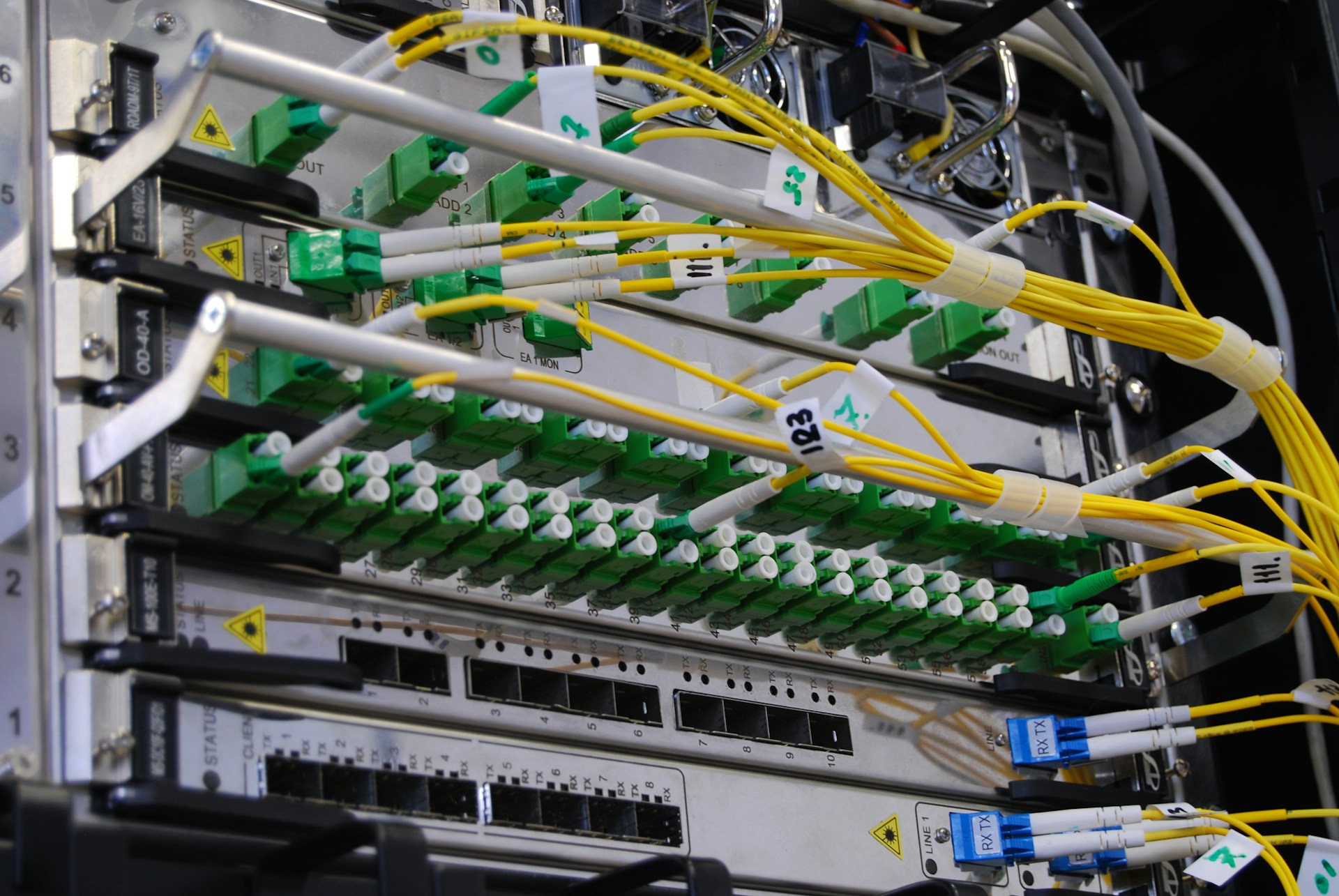ADSL vs. Leased Lines – which one is best for your business?
-
April 23, 2024
-
7 min read

Just a one-second delay in website loading time results in:
- 11% fewer visits to a page
- 16% decrease in customer satisfaction
- Around 7% loss in important conversions
Businesses would never like slow Internet to hold them back. A slow or disturbed internet connection can be like a clogged highway—emails crawl to a stop, video calls stutter and cloud storage seems unachievable. In today’s digital world, reliable internet is necessary for any successful business. From VoIP calls to real-time collaboration, every business depends on a constant data flow to keep things moving.
In the contemporary commercial environment, characterized by an escalating dependence on cloud-based services and digital data repositories, rudimentary internet packages are no longer sufficient. Modern businesses require robust bandwidth capacities capable of accommodating the unfettered flow of data. It is regardless of the volume or nature of user demands. That’s where the question arises – ADSL or a leased line?
Asymmetric Digital Subscriber Line or ADSL is a common, affordable way of getting connectivity using phone lines. It offers decent speed but is variable based on distance from the shared and exchange usage.
Leased lines are dedicated, high-speed connections that are installed specifically for your business. They offer consistent speeds, low latency, and guaranteed uptime, ideal for critical applications. However, they come with a higher cost.
Read the following sections to clear the air and understand what both connectivity solutions have for your business. Further sections will enable you to understand ADSL vs Leased Lines.
Understanding ADSL- definition and functionality
ADSL is a technology that utilises existing phone lines to deliver internet access to your home or business. While not the fastest option on the market, ADSL offers several significant advantages.
However, ADSL exhibits asymmetric bandwidth characteristics. This translates to download speeds being demonstrably faster than upload speeds. Additionally, the consistency of the connection can be impacted by the user’s distance from the telephone exchange and the level of shared usage on the network.
Since it is a contended connection, its performance gets compromised, with an increasing number of people sharing the connection. The most crucial advantage of ADSL internet is that it is readily available anywhere.
Functionality of ADSL
This technology allows for fast data transmission with high bandwidth on copper-wired telephone lines. It provides consistent broadband connections that are always on.
ADSL leverages your existing phone lines for internet access. A special filter separates the high-frequency internet signal from the low-frequency voice signal. It allows both phone calls and internet browsing to happen simultaneously. At the service provider’s hub, another filter further isolates the voice signal and routes it to the phone network.
Designed to handle the typical flow of internet use, ADSL prioritizes download speeds (receiving information) over upload speeds (sending information). This makes it a cost-effective option for getting internet that’s significantly faster than dial-up connections.
Advantages and limitations of ADSL
The main advantages of ADSL are:
- One of the key advantages of ADSL is that it provides high-speed internet access to existing telephone lines
- Users can make calls and use the internet simultaneously
- It provides high-speed internet at fair prices
- ADSL provides real-time access to information at a decent speed
Apart from many significant advantages, ADSL has some limitations as well:
- Though ADSL provides high-speed internet, the distance between the user and the telephone exchange affects the quality and speed of the connection.
- The internet speed you experience with ADSL can fluctuate depending on how many concurrent users exist in your location. This is because the available bandwidth is shared amongst everyone connected to the same telephone exchange. During times when there are many concurrent users, you might experience slower internet speeds.
Due to these limitations, other broadband technologies like leased lines and fibre-optic internet have emerged.
Leased Lines: definition and functionality
A leased line is a dedicated internet connection with a fixed bandwidth. In instances where uninterrupted, high-throughput internet connectivity is paramount for businesses or individual users, Leased Lines emerge as a compelling solution. A leased line connects two points of communication with an allocated circuit.
Companies, corporate offices, businesses, internet cafes, etc., use these leased lines. In other words, leased lines are used by users or businesses needing an uninterrupted Internet connection for communication and collaboration activities.
The key features of leased line broadband are:
- Point-to-Point Connection: Leased Lines connect two points: the Internet Service Provider and the business location.
- Uncontended: Leased Lines are uncontended, meaning they cannot be shared with other businesses.
- Symmetrical: This implies that leased lines provide the same speeds for uploading and downloading.
Functionality of Leased Lines
A leased line is a circuit that connects two points of communication. It is always functional and is charged based on rental plans provided by the ISP. Leased lines are allocated, exclusive, and dedicated. This implies that a dedicated internet Leased line is exclusive for business and personal use.
Leased lines reuse the circuits and establish a continuous pathway between two connection points. It allows a consistent flow of data.
Leased lines come in various speeds, ranging from a trickle of 1 Mbps to a superspeed of 10 Gbps. While the average leased line moves data at 2 Mbps, speeds of 10 Mbps and 100 Mbps are becoming increasingly popular.
Advantages and Limitations of Leased Lines
Some of the key advantages of leased lines are:
- Download and upload speeds are the same, so it doesn’t disturb the connectivity.
- The speeds are very high compared to other connections.
- The leased line connections are dedicated, which means that they are not shared with any other business. It prevents any interruptions in the connections.
- It provides reliable, low-latency connections.
- Leased lines are customizable and scalable.
Limitations of Leased Lines:
- The set up of leased line internet is expensive.
- The process of installing leased lines is time-consuming.
- Generally, the connectivity rentals are high.
How to choose between ADSL and Leased Line
At times, it may not be easy to choose between the ADSL and Leased Lines. It is important to define your business requirements and the budget.
Consider ADSL when your business doesn’t require much data. Also, consider speed constraints. Increased traffic slows down ADSL connections. If this doesn’t matter to your business processes, ADSL is the best option. Furthermore, ADSL offers limited upload time. ADSL is affordable and offers slow but reliable speeds.
Consider getting a leased line connection when your business requirements are data-consuming. These may include video conferencing, large file transfers, uploading content, etc. Leased Lines provide guaranteed speed. Also, Airtel Leased Lines is known to provide high upload capacity and reliability.
With encryption techniques, access control, firewall protection, and scalable DDoS protection, Airtel Business provides completely secure connections. Its security measures comply with DoT and TRAI regulatory guidelines.
To decide, weigh your internet usage needs against the budget. A leased line might be worth the investment if consistent, high-performance internet is crucial. Otherwise, ADSL could suffice for basic needs.
Make your business thrive with high-speed internet!
Deciding between an ADSL and a leased line is based on two key factors: business needs and budget. ADSL offers a cost-effective option for basic internet needs, like browsing and email.
However, a leased line is ideal if reliability, speed, and high upload capabilities are crucial for your business operations. Though more expensive, it proves to be a worthwhile investment that guarantees consistent, high-performance internet access.
Many dedicated leased lines, like Airtel Dedicated Line Connection, offer secure, cost-effective, and highly efficient internet connections that ensure your business stays connected.
 Share
Share









